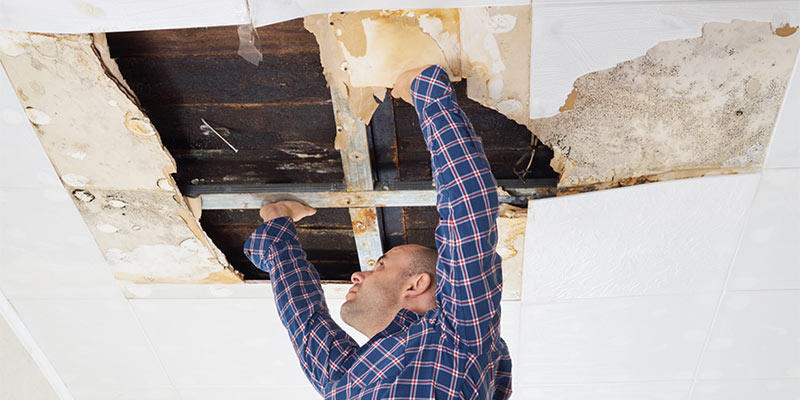
We tend to prefer that things last as long as possible — and that goes for our homes as well. Unfortunately, that is not the case and houses undergo wear-and-tear just like any other material item. Additionally, unless you are an inspector or very perceptive of change, the subtle distress of the home’s structure tends to go unnoticed. If you are worried about the condition of your old house, currently in the process of purchasing a new house, or just want to be sure that you are not overlooking any serious problems, there are a few simple clues to look for that may indicate some structural damage.
Looking for external signs of structural damage
Surprisingly, the best way to look for structural problems is by actually standing outside of the house. By looking at the house from a distance, say across the street, you may be able to notice large scale defects that were invisible when looking close to the building. The biggest things to look for here would be a slight tilt towards one direction, a slant in the roof, or perhaps some cracks or bowing in the exterior walls. Additionally, abnormalities or noticeable sagging in exterior features like chimneys and porches can also be good indicators that something is wrong.
Checking the doors and windows
In addition to the exterior features of the house, windows and doors can also provide signs that there are structural issues. Cracks in the corners of the window or door frames can show weaknesses — if it looks like these have been repaired in old houses it could potentially mean that there are issues. Where interior doorways are faulty, meaning that the door is no longer functional, this could indicate buckling and compression resulting from structural movement. Similarly, windows that are stuck or windowpanes that are cracked are signs that the foundation has shifted and could be indicators of serious structural issues.
Feeling the floors for abnormalities
If you turn off any sound from the television or background music and walk around the house, you may actually be able to hear creaking floor boards or loose tiles. While these sounds exist in most houses, even new builds, if they get louder or you hear them more frequently, they could be signs that the foundation is moving.
Assessing if you have termite damage
These insects may be small but they can cause considerable destruction of the structure of a house. By gradually chewing away at support beams, ceiling joists and wall studs, termites can do serious damage — especially if they remain undetected for long periods of time. You may hear them clicking in your walls, may actually see them flying around the house, or may find their droppings (a dark powdery substance) near the infestation. Structural damage like sagging ceilings, cracking walls, inoperable windows, or faulty doors may actually be signs of a serious termite infestation.
Look up to see if there any problems
Noticing changes in your ceiling can be a first sign of structural damage. If what you see looks like it is sagging or warped, or if there are visible lines running across the ceiling, it may require professional attention. Repairs should typically happen as soon as you notice that something is wrong — delays in maintenance could lead to a wavy ceiling that causes additional problems and might have a hefty repair bill.
Check for leaks
If you have anything — toilets, sinks, or tubs — that have been or are currently leaking, this could be due to structural problems associated with the septic system. Issues involving leaking can lead to additional problems like mildew and mold and can cause both health and financial complications. Roof-related leaks are also serious and can result in significant damage to internal structures.
Upon identifying any of these issues, it is advised to seek professional help as soon as possible. While it does not take an expert inspector to determine that that there may be structural problems in a house, in most situations, it does take a skilled individual to properly repair and prevent future issues. It is fairly simple to look for signs of structural problems and by doing so regularly — and addressing problems as soon as they are found — you should be able to extend the time that you can inhabit the house safely.
Mark

Mark, 32, from BestBar – Mark has been a marketer and content writer for over 10 years. Recently starting to work with Best Bar he has covered some hot topics in the Steel industry.
Mark specialises in journalistic articles tailored for large corporations.
In his spare time he is a loving husband and father of two. At the weekends he likes to visit Sydney harbour with the children and dine in many of the fine restaurants Sydney has to offer.
